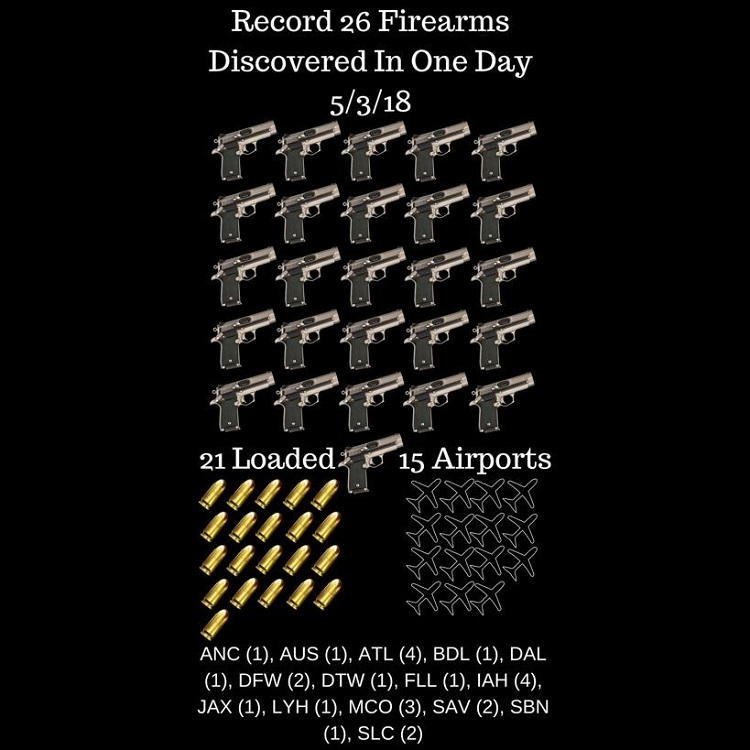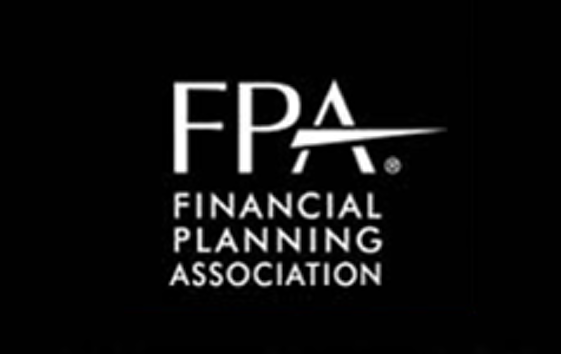 Arsenal Attorneys: A National Firm - Offices in Virginia and California
Arsenal Attorneys: A National Firm - Offices in Virginia and California
Arsenal Attorneys: A National Firm - Offices in Virginia and California
Arsenal Attorneys: A National Firm - Offices in Virginia and California
CONTACT US TODAY
800.819.0608
Backpacks and Guns Don’t Mix—Legally or Tactically
As gun lawyers, Arsenal Attorneys™ advise clients in the implications of keeping and bearing arms. We draw (no pun intended) on our collective in-house experience as lawyers, firearms instructors, range safety officers, and firearms dealers—a holistic approach, if you will. Regardless of how we look at it, backpacks and guns just don’t mix. From a legal standpoint, or tactically speaking, once you separate a gun from your person, you run the risk of making it inaccessible or worse, forgetting it altogether. Thus, your gun might not be where you need it, or you might take it where it is forbidden.
In self-defense law classes, we stress to students the need to carry their guns. Venable firearms instructor Tom Givens has taught many thousands of students over his 35 plus years as an instructor. Givens reports that 66 of his students have been involved in gun fights. Sixty survived with no injuries. Three were injured. Three were killed. Of this sample population, Givens confirmed the fatalities occurred when those three of his students found themselves unarmed in the face of danger.
When left without a practical method to carry a firearm on their person, many people choose to carry off their bodies. This is especially common with women who tend to wear clothes that are form-fitting and lack layers to conceal a sidearm. A purse becomes the most readily available option. Some people find a firearm too uncomfortable to carry and opt for off body carry in a fanny pack or backpack. Still others need to transport a firearm, and rather than going ‘strapped’, they carry their gun in a bag.
Off body carry, particularly with a backpack, however, carries both tactical and legal risks.
Lack of quick access to the firearm poses practical and liability problems. The need for a firearm is likely to arise rapidly. If a concealed carrier has the time to take the backpack off, open it up, find the gun amid everything else in the backpack, and pull out the gun, there is a good chance he has the opportunity to retreat and avoid using deadly force altogether. A safe retreat, if available, is almost always going to be a person’s best option both tactically and legally. After all, avoiding the gun fight could mean you don’t get shot, don’t get sued by the person you shot or his family, and don’t get arrested. Alternatively, if there is no time to draw the gun from a bag, then it is like having no gun at all.
We always emphasize situational awareness, and a frequent legal problem involving guns and bags reflects the total opposite mindset: forgetfulness. In numerous cases, we have represented well-intentioned clients whose guns forgotten in bags or briefcases are discovered by security guards at the entrances of ‘gun-free zones’, especially during x-ray screening at government facilities and airports. Incidentally, the number of arrests at the airport for unlawful possession of guns or ammunition has dramatically increased, not necessarily because of an increased number of guns discovered, but because of more aggressive prosecution of these cases.
Every case in which we have been contacted by a potential client arrested for gun possession in a security checkpoint had forgotten that gun in a backpack. There are obviously serious consequences even to inadvertently entering a secured area with a firearm. In the District of Columbia, the government can charge the felony of carrying a handgun without a license, possession of an unregistered firearm, and possession of unregistered ammunition, the latter two charges being misdemeanors having potential jail terms of one year. Assuming the individual has a license to carry in the District of Columbia, that license very well could end up revoked and the carrier charged with a misdemeanor for violating carry restrictions. That offense comes with a potential jail term of 180 days.
At Virginia airports, the charge could be carrying a dangerous weapon into an air terminal, a Class One misdemeanor, carrying a potential jail term of one year and/or a fine of up to $2,500. On top of that, TSA is likely to impose an administrative fine on the offender.
There are similar statutes covering courthouses and schools in Virginia.
In almost all cases involving persons with a clean record and no aggravating circumstances, it could be possible to negotiate a disposition that avoids jail time. However, if a person convicted of a crime could have been subject to imprisonment of more than a year, whether a misdemeanor or a felony, and regardless of whether they had been imprisoned at all, such a person would become a ‘prohibited person’ and therefore lose the Second Amendment right to keep and bear arms.
Our best advice, to ensure your personal safety and to reduce your legal risks, don’t carry a gun in a backpack.
Approvals for DC Carry Licenses Skyrocket; Where Is the Bloodshed Officials Feared?
By George L. Lyon, Jr
Arsenal Attorneys™ recently learned from sources in the Metropolitan Police Department that the District of Columbia has issued more than 2,000 Concealed Carry Licenses to residents and nonresidents alike. This confirms recent reporting by Daily Caller journalist Kerry Picket, who revealed that until September 2017, as few as 123 persons were able to satisfy the District’s requirement to show a special need to carry a handgun outside the home for personal protection. And then things changed. The District became a shall issue jurisdiction, and, therefore, the number of Concealed Carry Licenses skyrocketed to the 2,000+ total today.
In June of 2017 the United States Court of Appeals for the District of Columbia Circuit in the Wrennand Grace cases determined that the District’s stringent need requirement violated the Second Amendment rights of District residents and visitors. Several months later, after the full DC Circuit refused to disturb that decision, the District quietly accepted the result rather than seek Supreme Court review and risk a decision likely to jeopardize other facets of its restrictive gun laws and those of other states.
Concealed carry permit
holders have arrest and
conviction rates 6 to 10 times
lower than police officers
The 2,000+ DC permit holders are resident and non-resident, non-law enforcement individuals now authorized to carry a gun in the city, and more persons are applying to the Metropolitan Police Department for carry licenses every day.
Which brings us to the question of where is all the crime and violence DC officials predicted if persons were allowed the means to protect themselves with licensed concealed firearms? DC officials have always claimed their restrictive gun laws were necessary for public safety. But former DC Metropolitan Police Department (“MPD”) Chief Cathy Lanier put the lie to the canard when she admitted that legal gun owners were not the problem.
Although there has been a spike in homicides in the District this year compared to last, violent crime in general is down seven percent this year compared to 2017, and burglary is down eight percent. In no case in which we are aware has a person holding a District of Columbia carry license been charged with a serious crime. That is not surprising at all. Around the nation, concealed carry permit holders have arrest and conviction rates 6 to 10 times lower than even police officers. In the numerous states that have adopted either “shall issue” or permitless carry, i.e. Constitutional carry, the scaremongering of Second Amendment opponents has proven false.
What is surprising is that due to DC’s reputation for stringent gun laws, many residents and nonresidents are still unaware that if they jump through the necessary hoops, they can get a license to carry a concealed handgun in Washington, DC.
Those hoops include submitting an application in person, undergoing fingerprinting, registering their carry gun, and taking 16 hours of classroom firearms training and two hours of range training, including passing a 50 round shooting test from 3 to 15 yards. Assuming there is nothing otherwise disqualifying in the applicant’s background, MPD is required to issue the applicant a concealed carry license.
Arsenal Attorneys’ George Lyon is licensed to practice law in Virginia and the District of Columbia. He was one of the plaintiffs in the Palmer v. District of Columbia case that forced DC to begin issuing concealed carry licenses and in the Heller case that legalized handguns in Washington, DC. Mr. Lyon is licensed by MPD to teach the DC concealed carry course and conducts the course monthly. His next class is scheduled for December 15-16 in Arlington, Virginia. Mr. Lyon can be reached at gll[at]arsenalattorneys.com or at 703-291-3312.
Top 5 Topics About NFA Firearms and Gun Trusts
 Every day Arsenal Attorneys receives inquiries from across America about trusts and NFA firearms (silencers/suppressors, short barrel rifles, short barrel machine guns, AOWs, full auto, etc.). Here are the five most common topics we address for new and existing clients:
Every day Arsenal Attorneys receives inquiries from across America about trusts and NFA firearms (silencers/suppressors, short barrel rifles, short barrel machine guns, AOWs, full auto, etc.). Here are the five most common topics we address for new and existing clients:
1. ATF Form 5320.20: Remember to submit this form to ATF if you have permanently relocated your NFA firearms. It is also required for interstate travel with NFA firearms, excluding silencers.
2. New Address: If you have a new address, identify this location as your trust's new 'place of administration' in a written statement providing notice to the beneficiary. As a courtesty, our firm drafts these statements for a very small fee.
3. New Design: If your Arsenal Gun Trust was drafted before 2016, or if your trust is not an Arsenal Gun Trust, we can completely revise it by means of a 'restatement.' Our new design provides guidance and customized tools to minimize the impact of Obama era regulations. It particularly helps you remove people before they must provide fingerprints and photos for NFA applications. See #4.
4. Add/Remove People: Contact us if you wish to change the people in a trust, particularly to exclude them from the fingerprint and photo requirements for new NFA applications. Remember, a person needs to provide fingerprints and photos only if they qualify as a 'responsible person' during the processing of an NFA application. We can help you appoint people to your trust after an NFA application is completed and when the fingerprinting and photograph requirements would no longer apply to those persons.
5. You Need a Trust: Ask us for an Arsenal Gun Trust if you want to register NFA firearms, to allow others to possess those arms, and to create an estate plan to avoid the need for new NFA registrations or a public probate court process.
For help with these and similar topics about the National Firearms Act, ATF regulations, and trusts, contact Arsenal Attorneys using our online form at this link.
Road Rage & Guns: Call the Police Immediately

By George L. Lyon, Esq.
Venable firearms instructor Tom Givens (see www.Rangemaster.com) says the “Six R’s’ of criminal assaults are: robbery, rape, respect, revenge and road rage.”
While most people could honestly claim they have never had an issue with the first five of Givens’ six R’s, one study estimates that more than half of all drivers have experienced road rage. Road rage should be taken seriously by gun owners particularly. Even if a road rage incident does not involve fisticuffs, a collision, or gunfire, the handling of a gun to ward off another driver could turn a temper tantrum into a crime.
More than half of all drivers have
experienced road rage.
A road rage incident begins when one driver takes offense at the actions of another driver and decides to “teach him a lesson.” Actions can range from yelling at the other driver to more dangerous actions when the offended driver decides to use his vehicle as a tool to exact retribution. These dangerous actions can include tailgating, continuously shining bright lights from behind during nighttime, cutting in front of the other vehicle and slamming on the brakes (brake checking), attempting to stop the other vehicle and instigating a verbal argument or physical altercation, or in extreme cases trying to run the alleged offending vehicle off the road or pointing a gun at the other driver or shooting.
For anyone, a road rage incident threatens physical safety and would likely result in legal problems. For persons who carry a firearm for personal protection, getting involved in a road rage incident carries an even greater risk of legal difficulties. Let’s look at three recent incidents, all of which vividly demonstrate the need to handle road rage incidents carefully and to contact police immediately.
Incident one. Motorist A is proceeding on the interstate in the left lane. His lane is about to end so he floors it, whizzing past Motorist B in the next lane and cutting into that lane. Motorist B takes offense and pulls up beside Motorist B yelling and veers into his lane causing Motorist A to veer onto the shoulder of the road. Motorist A accelerates and pulls away from Motorist B. In response, Motorist B catches up with Motorist A, who believes Motorist B is about to try to push him off the road again. Motorist A displays a pistol, causing Motorist B to back off temporarily. Motorist B then returns while holding an object out the window. Motorist A believes it might be a gun, and he aims his pistol at Motorist B. The object is actually a camera. Motorist B backs off, incident over, or is it?
Motorist A proceeds to his destination only to be pulled over by the state police who arrest him for brandishing.
Incident two. This incident is very similar to Incident One. Motorist A is driving on the highway and makes a lane change. Next thing he knows Motorist B is tailgating him extremely closely. Motorist A taps his brakes to cause Motorist B to back off. The brake checking apparently provokes Motorist B to the point that he comes up beside Motorist A and like in the previous example veers into Motorist A’s lane while yelling and screaming. Motorist A pulls into the next lane to turn right into a shopping center. Motorist B follows him into it until Motorist A shows him his firearm. Motorist B hesitates and then drives on. Motorist A leaves his car to grab a coffee. When he returns to his vehicle, he finds the police waiting for him. They ask whether he is carrying a firearm. He says yes. They arrest him for brandishing.
Incident three. Motorist A is driving on an interstate highway in the fast lane with a passenger. He soon finds himself behind the slower driving Motorist B. Motorist A flicks his bright lights on and off to induce Motorist B to move over. Motorist B responds with repeated brake checks. Motorist A quickly bypasses Motorist B and races ahead. Motorist B then gives chase well over the speed limit. As the two vehicles are momentarily side-by-side, Motorist B points a gun at Motorist A. Motorist A is legally armed but does not respond in kind. Motorist A makes a high-speed exit off the highway followed by Motorist B. Seeing a red light ahead at the end of the exit, Motorist A decides running the light to escape is better than risking a gun fight, but he then crashes into a vehicle traveling through the intersection in the cross traffic. Motorist B drives on.
Lessons Learned. What did all three innocent drivers have in common here? None of them called the police while the incident was occurring. In the first two incidents the aggressor, rather than the perceived victim, called the police, and the police arrested the victim. In the third incident, police responded to the accident but did not charge the driver who ran the red light. Note, that in the third incident, there was a passenger in the vehicle who could confirm the driver’s story.
Brandishing is defined as holding or pointing to a gun in a
public place in a manner that would reasonably
induce in the mind of another the likelihood of being shot.
Noted firearms instructor and use of force expert Massad Ayoob has explained that the first person to call the police is typically assumed to be the victim, which leaves the other person as the apparent perpetrator. It is obviously necessary to call police if you must shoot in self-defense. However, merely drawing, showing, or even pointing to a concealed gun to stop an attack is a use of force that requires calling the police as well, and if such action is not justified, it is itself the crime of brandishing. In Virginia, for example, brandishing is defined as holding or pointing to a gun in a public place in a manner that would reasonably induce in the mind of another the likelihood of being shot. Brandishing is punishable by up to a year in jail and a $2,500 fine (Va. Code §18.2-282).
Self-defense is a defense to a charge of brandishing. However, a valid self-defense claim requires you to be an innocent party. Innocence plainly means that you did not start the fight. However, in states like Virginia, it also means that you did not provoke the confrontation. Here in Virginia, if you are the least amount at fault in bringing about the confrontation you are required to break from the confrontation, announce your intent not to fight and retreat prior to using deadly force. That fault can arise from gestures, insulting words, or, in the course of road rage incident, retaliation, such as brake checking, tailgating, etc.
Speaking of gestures, firearms instructor John Murphy cautions, “Don’t engage in digital communications.” That is not a reference to driving while texting. Instead, Murphy is referring to the bird, that is to say the display of the most triggering finger other than, well, your actual trigger finger. Murphy illustrates his teaching points with realistic scenarios, and his courses often feature road rage (seewww.fpftraining.com). He strongly advises students to disengage and subdue their ego before something regrettable happens.
“If you think the guy that just cut you off is going to make you late for work, imagine how late you're going to be after a ten year stretch in prison,” remarks Murphy.
When possible, avoidance is the preferred response to danger, but we all must be realistic about the probability of road rage within ourselves and from others. If you find yourself in a road rage situation, it is crucial to contact law enforcement as soon as possible.
George Lyon practices law licenses in Virginia and the District of Columbia as part of Arsenal Attorneys™, a nationwide law practice. He has decades of experience including complex litigation and criminal defense. Mr. Lyon frequently teaches self-defense law and tactics, including the requirements for carry permits in the District of Columbia. He was one of the original plaintiffs in the Supreme Court’s landmark Second Amendment decision in Heller, and he was a plaintiff in the recent Palmer case compelling DC to issue carry permits. On October 20-21, Mr. Lyon will be offering his next seminar addressing DC carry permits, firearms regulations, self-defense law, and tactics. The program will fulfill requirements for a DC carry permit, which are available to non-residents.
TSA Sets One Day Record for Guns Found in Airports
 Arsenal Attorneys regularly advise and represent clients dealing with the difficulties of traveling with firearms, including differing state laws, complex federal laws, and the multiplicity of rules for parks, schools, and other places which could sometimes be gun-free zones. As the summer travel season approaches, we want to share a word of caution from the Transportation Security Administration.
Arsenal Attorneys regularly advise and represent clients dealing with the difficulties of traveling with firearms, including differing state laws, complex federal laws, and the multiplicity of rules for parks, schools, and other places which could sometimes be gun-free zones. As the summer travel season approaches, we want to share a word of caution from the Transportation Security Administration.
From TSA’s blog published on May 10, 2018:
TSA discovered 90 firearms in carry-on bags around the nation last week. Of the 90 firearms discovered, 73 were loaded and 35 had a round chambered. Firearm possession laws vary by state and locality. TSA may impose civil penalties of up to $13,066 per violation per person for prohibited items violations and violations of other TSA regulations. Repeat violations will result in higher penalties. Travelers should familiarize themselves with state and local firearm laws for each point of travel prior to departure. You can go here for more details on how to properly travel with your firearms in checked baggage. All of the firearms pictured were discovered over the last week. See complete lists below.
TSA officers set a record on May 3rd, for the most firearms discovered in carry-on bags in one day. 26 firearms were discovered at 15 airports. 21 of the firearms were loaded.
If packed properly, ammunition can be transported in checked-baggage. . . You can go here for more details on how to properly travel with ammunition in checked baggage.
We don’t know if replica or inert items are live until our explosives professionals take a closer look and eventually open the bag. That takes time and slows down the line. It can even lead to a complete shutdown and evacuation. Real, inert, or anything resembling an explosive item is prohibited in both carry-on and checked baggage.
. . .
Checkpoint and checked baggage screening acts as a deterrent to keep those with ill will from attempting to cause catastrophic damage to an aircraft. In addition to all of the other prohibited items we find weekly in carry-on bags, our officers also regularly find firearm components, realistic replica firearms, bb and pellet guns, airsoft guns, brass knuckles, ammunition, batons, stun guns, small pocket knives and many other prohibited items too numerous to note.
Removing a Responsible Person from an NFA Gun Trust
Before you use an old trust to register new NFA firearms, you should consider updating your trust to remove ‘responsible persons.’
Since the ‘41F’ changes to the rules for registering NFA firearms by trusts made by the Obama administration, any person qualifying as a ‘responsible person’ in a trust must complete ATF Form 5320.23, which includes fingerprints and photographs for each new NFA application. A ‘responsible person’ would include any person authorized to possess your trust’s NFA firearms. This raises two key points.
First, Form 23 only applies to responsible persons who are in your trust while an NFA application is in process. Thus, if you remove a ‘responsible person’ from your trust before submitting an NFA application, that person would not be subject to Form 23—even if you re-appoint that same person to your trust after receiving a new NFA tax stamp.
Second, neither the beneficiaries, who inherit your trust’s firearms, nor the successor trustee, who manages the trust after you, need to be a ‘responsible persons.’ Thus, you could appoint a successor trustee or a beneficiary for estate planning purposes without exposing those people to the fingerprint and photo requirements for Form 23, if your trust is designed accordingly.
There could be hundreds of thousands of NFA trusts designed before 41F and Form 23. They did not anticipate the requirements for ‘responsible persons.’ Many of these were do-it-yourself trusts, and they lack updated guidance or legal support for the new regulations. Many of these trusts inadvertently gave ‘responsible person’ status to various co-trustees, co-settlors, co-grantors, beneficiaries, successor trustees, etc. ATF is now rejecting applications by these trusts if they do not include Form 23s for each of these responsible persons.
Assuming it’s undesirable to collect fingerprints and photos for responsible persons in a trust other than the principle trustee, you may avoid this red tape by removing these other people from your trust before submitting an NFA application; however, we recommend you make changes to your trust with the help of a qualified attorney. For example, if you remove the only beneficiary in a trust, you could invalidate the trust.
Before and after 41F, Arsenal Attorneys’ Arsenal Gun Trust avoided these problems, and we keep our clients apprised of important developments in this area of law. If you’re concerned with a trust you obtained elsewhere, you can become an Arsenal Attorneys client. We can then completely revise your existing trust using our Arsenal Gun Trust design. The revision, or ‘restatement’, would enable you to change the people in your trust and make other updates, such as an address change.
Your restatement would include forms customized for you to add/remove ‘subordinate trustees.’ Other than you, the subordinate trustee would be the only other person(s) who would qualify as a responsible person for new NFA applications. Thus, you could use the forms to remove subordinate trustees if you wish to exclude those people from new NFA applications. After receiving a tax stamp, you could then appoint (or re-appoint) subordinate trustees to your trust so they may possess your trust’s NFA firearms—without ever having completed Form 23 and without providing fingerprints and photos.
The concept of a ‘subordinate’ trustee is one of many innovations by Arsenal Attorneys. In comparison, typical gun trusts give people authority to possess your trust’s NFA firearms by appointing them as co-trustees; however, that status could make them your co-equal, and, therefore, threaten your control over your own gun trust. From the beginning we’ve always made our clients the sole person to control the trust, and subordinate trustees are given only the limited authority they need for safe and legal possession of NFA firearms.
Arsenal Attorneys™ is perhaps America’s largest firearms law practice with thousands of clients nationwide. We have taught firearms law for the American Bar Association, the Federal Bar Association, the Financial Planners’ Association, and the National Rifle Association. Our attorneys include certified firearms instructors, FFLs, one of the original plaintiffs in the landmark Heller case, and a plaintiff in the successful Palmer case for DC carry permits. Recently we won 2nd Amendment suits overturning unconstitutional laws in DC and Baltimore.
We operate as a modern law practice, using online technology to serve clients conveniently and efficiently by phone, email, and shipments of their documents to their doorstep. Our mission is to help clients acquire, handle, and inherit firearms. Our vision is to deliver legal services so focused on our area of specialty that we can offer the highest quality in a cost-effective manner.
To obtain a new Arsenal Gun Trust or to request a restatement of a trust you obtained elsewhere, complete our online questionnaire at this link.
CONTACT OUR FIRM
CONTACT US TODAY
Arsenal Attorneys is committed to answering your questions about estate planning, firearms, business law, litigation, and criminal defense issues.
We'll gladly discuss your case with you at your convenience. Contact us today to schedule an appointment.
LOCATION
4000 Legato RoadSuite 1100
Fairfax, VA 22033
800.819.0608











